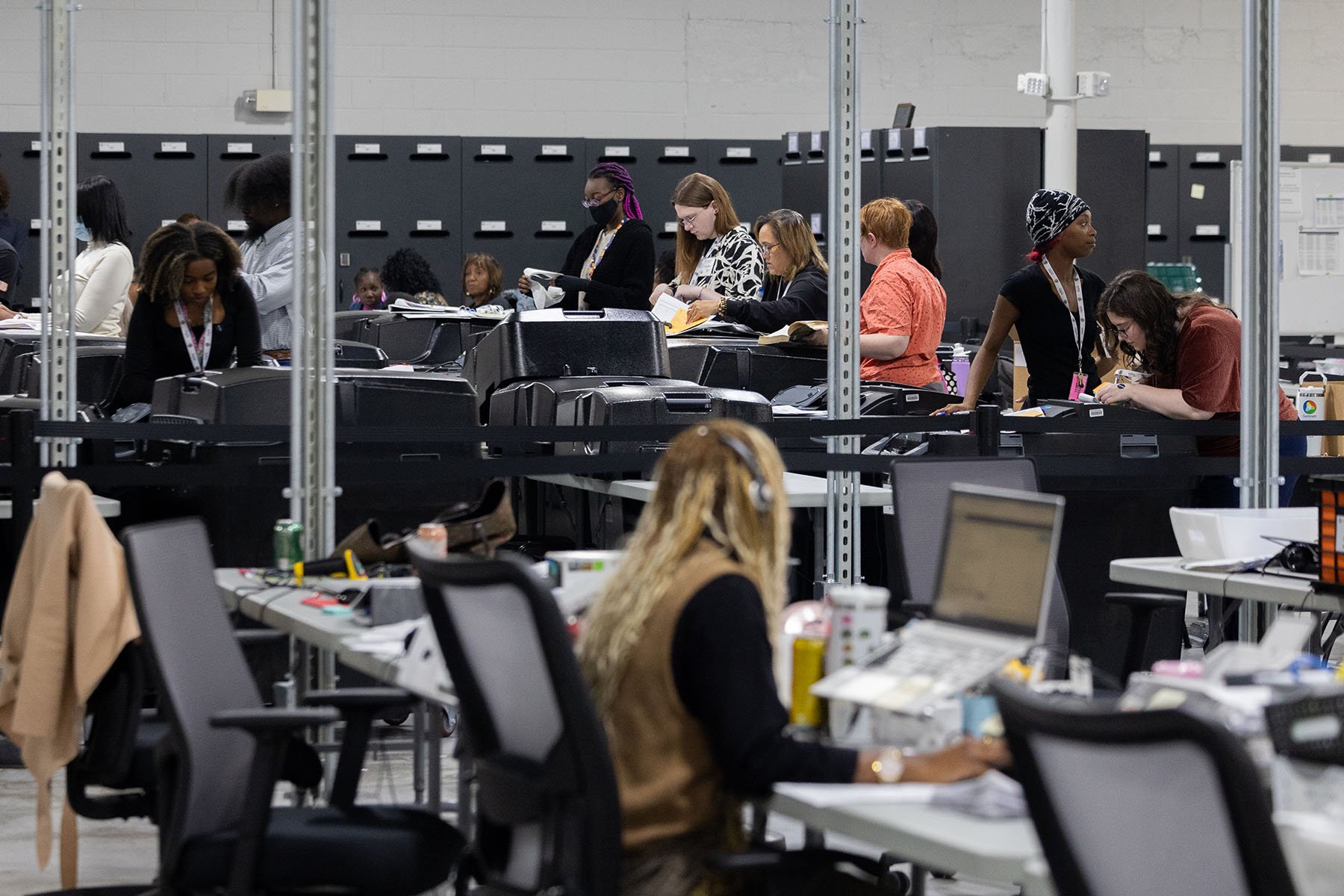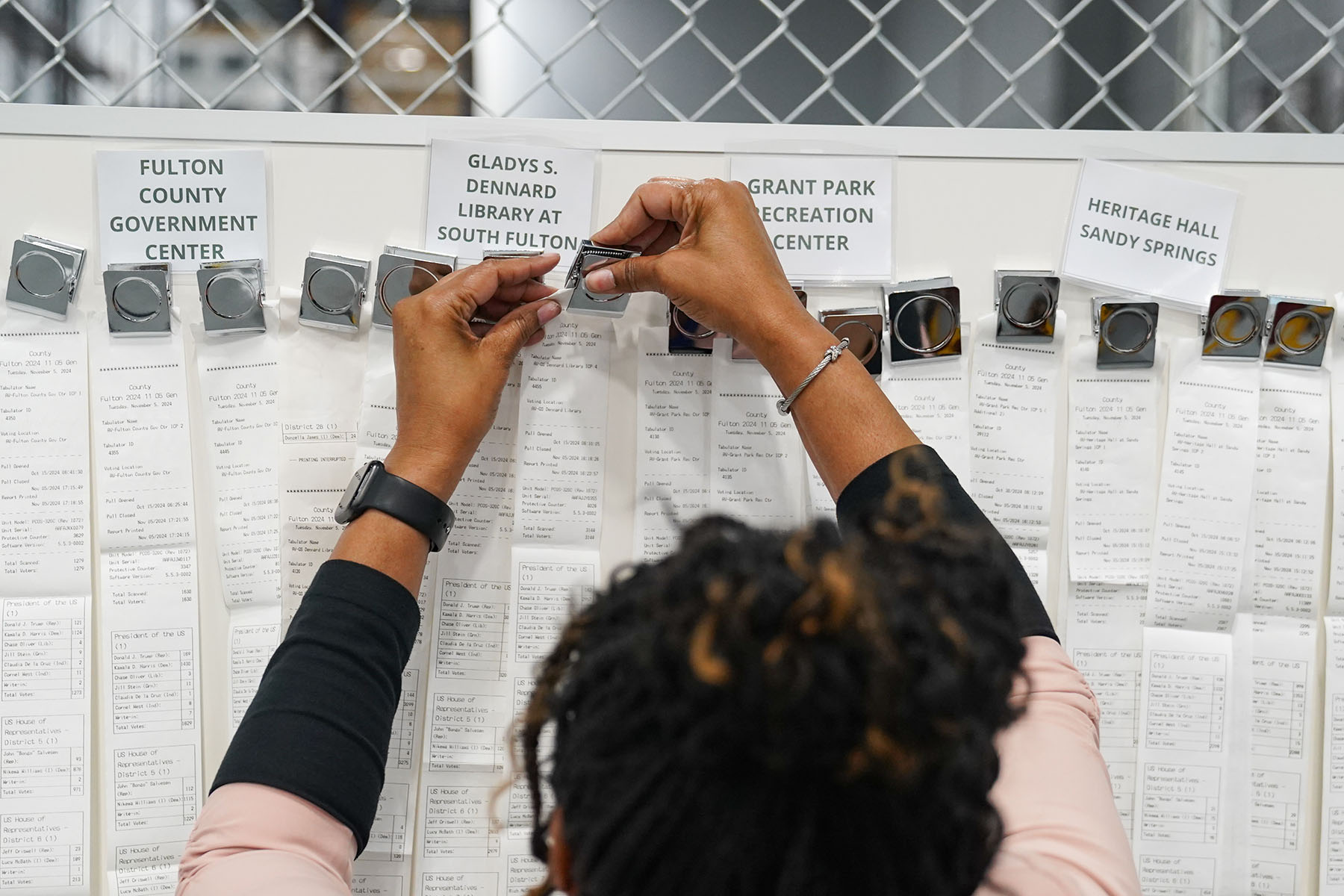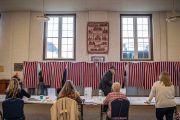The 19th is committed to covering the unfinished business of voting rights. Read more about how we’re approaching that in this pivotal election.
Election officials across the country administered a relatively smooth 2024 general election on Tuesday, despite reports of bomb threats, technical issues and a polarizing online ecosystem that at times challenged the integrity of counting ballots.
The predominately women-led workforce went into Election Day having readied for potential disruptions and a disinformation campaign that had swelled in the final weeks of the presidential race between Republican Donald Trump and Democrat Kamala Harris. But by early Wednesday, their processes for receiving and counting ballots — and a large enough vote margin in key battleground states — enabled major news outlets to project the former president’s win over the vice president shortly after midnight, days faster than in 2020.
“The culmination of voting yesterday has demonstrated that once again our election professionals have administered a safe and secure election in the face of adversity,” said Tammy Patrick, chief executive officer for programs at the Election Center, an organization that works with election officials, in a statement. “From flooding and hurricanes to foreign disruption campaigns, our election officials did all in their power with the resources on hand to make certain voters had opportunities to vote over the course of the election cycle. As the ongoing post-election work continues in the ensuing days and weeks, they will ensure that the final official results are accurate.”
While election officials in some states dealt with issues involving voting equipment, non-credible bomb threats were reported at polling sites in several battleground states with large populations of voters of color, including Black residents in the metro Atlanta area and Indigenous people in Arizona. Some locations were briefly closed and kept open later. Some threats appeared to originate from Russian email domains, according to the FBI.
Election officials said they worked to ensure voters who reported to impacted sites were not disenfranchised, but it is difficult to measure the full impact of the closures.
Zach Manifold, election supervisor in Gwinnett County, Georgia, where a handful of polling sites were impacted, said during a call with the press that he spoke with a woman on Election Day who worried about whether she or her husband would be able to return to one of the polling sites later. He reminded her that she would have more options to vote at different sites later in the evening because of Georgia law.
-
Previous Coverage:
-
Previous Coverage: As Americans head to the polls, a women-led workforce is on high alert
“I did not hear much of people kind of in that situation, that they didn’t think they’d get back or they wouldn’t have time that day,” he said.
Jen Easterly, director of the Cybersecurity and Infrastructure Security Agency (CISA), the lead federal government agency for election infrastructure security, released a statement on Wednesday applauding the work of state and local election officials and poll workers.
“As we have said repeatedly, our election infrastructure has never been more secure and the election community never better prepared to deliver safe, secure, free, and fair elections for the American people,” she said. “This is what we saw yesterday in the peaceful and secure exercise of democracy. Importantly, we have no evidence of any malicious activity that had a material impact on the security or integrity of our election infrastructure.”
Carolina Lopez, executive director for Partnership for Large Election Jurisdictions, an organization that works with election officials, spent Election Day at a CISA command post and said during a call with press that she observed federal authorities responding to the incoming reports of bomb threats. She said it is clear that tabletop exercises in recent years had paid off.

“I saw professionals through and through, across this country, sort of understanding … ‘Let’s figure out what’s happening. Let’s figure out who we need to talk to — legal, law enforcement, local election officials — how do we communicate with the community so that they understand, we are here for them, and minimizing disruptions,’” she said during a media briefing. “I think that there’s something to be said about the preparation that went into making that a non-story today.”
Trump, who cast doubt on the voting process during his 2016 win and 2020 defeat, did not commit to fully accepting the results of this year’s election. In the final weeks of campaigning, he claimed without evidence that there would be widespread voter fraud, including in the battleground states of Pennsylvania and Michigan. But on election night, as the vote returns showed he was poised to win, Trump appeared to stop spreading that narrative.
In the lead up to November, both Harris and Trump had prepared legal teams for a potentially lengthy post-Election Day period if the race had been close and questions emerged about legally cast ballots during the certification process
But Harris, who sought as a vice president and candidate to prioritize access to the ballot, reportedly called Trump on Wednesday morning to concede — a move that sets in motion the peaceful transfer of power.
Jay Young, senior director of voting and democracy at Common Cause, a voting rights advocacy organization, said during a post-election media briefing that the nation needs to turn down the rhetoric on widespread voter fraud — of which there is no proof.
“There cannot be this continued attack on this institution, and to do anything to support a notion that, ‘Well, if our guy wins, the election was administered fairly. But if our guy doesn’t win, there was a problem, there was a fraud.’ We have to change that,” he said.
Young said he considered it a “significant victory” that early voting, either in-person or by mail, was popular this year. At least 80 million people cast a ballot ahead of Election Day. He also noted that some states updated vote-counting rules that allowed election officials to pre-process mail-in ballots. That sped up the vote-counting in some areas.
“Those reforms also make it easier for those election workers to process and count our votes in a timely way, and we’re going to see that play out, hopefully, over the coming days and weeks,” he said.
In his first remarks to the nation on Wednesday morning, Trump claimed that he won the popular vote and that Republicans had won the U.S. House. But that is not clear yet — ballot counting to determine control of the House is expected to take at least several days if not weeks.
On Wednesday, election officials returned to work to process and count more ballots that will determine local, state and federal races around the country.






